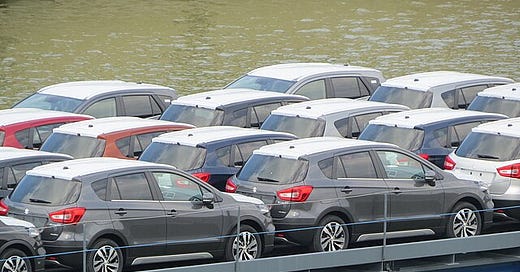On March 26, 2025, President Trump announced additional tariffs of 25% on imports of automobiles and automobile parts to address the threat to national security from the “imports of automobiles and certain automobile parts.” The 25% tariff is in addition to any other duties, fees, exactions, and charges on the imported goods. Tariffs on automobiles will be effective on April 3, 2025 and tariffs on auto parts will be effective no later than May 3, 2025.
Products
The 25% tariff will be applied to imported passenger vehicles (sedans, SUVs, crossovers, minivans, cargo vans) and light trucks, as well as key automobile parts (engines, transmissions, powertrain parts, and electrical components). There will be a process to expand tariffs on additional parts if necessary.
USMCA
Automobiles and parts imported under the United States-Mexico-Canada Agreement (USMCA) can request to apply the 25% tariff only to the value of the non-U.S. content of the automobile, calculated by subtracting the value of the U.S. content from the total value. The proclamation stated that U.S. content “refers to the value of the automobile attributable to parts wholly obtained, produced entirely, or substantially transformed in the United States.” Canada and Mexico account for about half of U.S. auto imports, the Wall Street Journal reported.
Auto Imports and National Security
Trump based his decision to impose the tariffs on a 2019 Commerce Department report that found that “automobiles and certain automobile parts are being imported into the United States in such quantities and under such circumstances as to threaten to impair the national security of the United States.” He invoked authority under both Section 301 of the Trade Act of 1974 and Section 232 of the Trade Expansion Act of 1962, which allows the president to adjust imports if they threaten national security.
Trump stated in a fact sheet that the tariffs are part of the administration’s actions to “end unfair trade practices that jeopardize U.S. national security.” These new tariffs, Trump stated “aim to ensure the U.S. can sustain its domestic industrial base and meet national security needs.”
Trump noted that legislation, existing trade agreements, revisions to the U.S.-Korea Free Trade Agreement, and trade negotiations “have not sufficiently mitigated the threat to national security posed by imports of automobiles and certain automobile parts.” Trump stated that foreign automobile industries, “bolstered by unfair subsidies and aggressive industrial policies, have expanded, while U.S. production has stagnated.”
Additional Details
If the Customs and Border Protection (CBP) assesses that the value of the U.S. content is overstated, the 25% tariff shall apply to the full value of the automobile, regardless of the actual U.S. content of the automobile. This will apply retroactively from April 3, 2025, to the date of the inaccurate overstatement and prospectively from the date of the inaccurate overstatement to the date the importer corrects the overstatement.
The 25% tariffs will not apply to automobile parts that qualify for preferential treatment under the USMCA until a process is established to apply the tariff exclusively to the value of the non-U.S. content and a notice on the process is published in the Federal Register.
No duty drawback is available.


